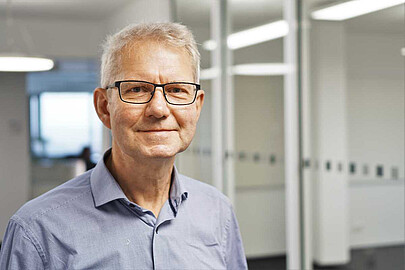Radio Frequency Identification (RFID) is a well-known wireless system technology, which is getting more and more important in our daily life. In principle, an RFID system consists of a reader, which is an active device, and a transponder, which is in most cases a passive device. The reader transmits data and power to the transponder by near or far field coupling. Typically, low frequency systems use magnetic coupling between a reader and a transponder coil. At higher frequencies, far field coupling between reader and transponder antenna is accomplished. Due to the different coupling mechanisms, the operating distance is up to a few tenth of centimeters (near field coupling at 13.56 MHz) or a few meters (far field coupling at 868 MHz). These frequencies are the most important operation frequencies of commercial available RFID systems. In both cases, the rectified reader signal serves as supply voltage of the transponder. The communication between reader and transponder is based on different techniques, depending on the communication direction. While the reader uses standard digital modulation of the reader signal (in most cases Amplitude Shift Keying; ASK) the communication in direction from the transponder to the reader is accomplished by load modulation (near field coupling) or backscattering (far field coupling) of the reader signal.
Although there are many commercial RFID systems available; a lot of scientific research is still needed for performance improvement of established systems and for new emerging applications and markets. At the Institute of Microwave and Wireless Systems a research team works on different interesting topics for new RFID applications. Currently an optically powered millimeter wave sensor transponder, which can be easily integrated into metal, is investigated. The device measures temperature and acceleration logs all interesting events, and transmits the data to the corresponding reader. The transformation of the scientific results of former work done in the CRC 653 into an industrial system is the main topicof actual investigations. In this project the advantage of low power wireless communication via backscattering is used for monitoring machine tools used for industrial high speed drilling processes.
Optoelectronic Integration of Radio Frequency Communication Systems in Metal Components
Since 2005 HFT is working on the research of wireless communication systems in the framework of the Collaborative Research Centre 653 (CRC 653) “Gentelligent Components in their Lifecycle - Utilization of Inheritable Component Information in Production Engineering” [CRC653 website]. The objective of this sub-project is to enable a metallic component to communicate with its environment, store and process data during its entire life cycle. For this purpose, electromagnetic waves in the gigahertz range are used.
Wireless Process Monitoring for Industry 4.0
In the idea of the fourth industrial revolution we see a merging of the real and virtual world to one internet of things (IoT). Even smallest devices and machines will communicate with each other or with operators and they are able to organize themselves without the need of any centralized controller. The future-oriented project “Industry 4.0” is aimed to realize this vision in the industry to be well-equipped for production in future.
An excellent example for such an application in production is the equipment of the tools and work pieces with intelligent monitoring systems. This information and communication system consists of a transponder assembled with sensors, called sensor node, and a reading device, via which the data exchange is initiated. The integration of a sensor node in a tool enables an early fault detection and enhances the efficiency of the process chain by an optimal and more efficient use of machines.
-
Process Monitoring on Rotating Machine Tools
The realization of a process monitoring solution for rotating machine tools with high rotating speed, for example on drilling and milling machines, is a challenge. In the development of the sensor nodes, technical challenges must be solved e.g. the integration of the sensor node, the wireless power supply and especially the wireless data communication.
For the power supply of the sensor nodes the use of energy harvesting systems comes into question. Such a system collects energy from the environment, saves this into a storage and powers the electronic device. The amount of energy collected from the environment is heavily limited, thus the energy consumption of the whole sensor node has to be extremely low. For this purpose, backscatter modulation is well suitable to use as modulation technique for the wireless data transmission from the sensor node to the reader. In this way, the energy consumption used for the modulation is nearly zero. On the basis of the subproject L2 in the Collaborative Research Centre 653 we develop a sensor node for this specific application with rotating tools. The energy supply is also implemented here via light with the help of solar cells, but with an extended energy management system that controls the power supply of the electronics and the charging of an energy storage device. In addition, all components, including the sensors, microcontrollers, comparators etc. are further optimized with regards to energy consumption.
The transmission range of typical RFID systems is comparatively low, which leads to great challenges building a transponder for rotating metallic machines with stable data connection. Assuming a data transfer is only possible on small distances, as in a conventional RFID system, we have in this scenario (large metallic machine) only a short time slot, or in other words a fraction of a turn, to communicate with the sensor node. The rotation speed of the machine, which varies from standstill to very high numbers, is also aggravating. Nevertheless, in order to establish a stable data transmission with a sufficient data rate, we investigate different approaches and integrate them into the system. This includes for example a further development of the antenna system both on the sensor node and on the reader, an extension of the communication protocol with forward error correction or an improved use of the available frequency bandwidth. As a transfer project, we work on this in cooperation with the company Artis GmbH and the research partners of the Institute of Transport and Automation Technology (ITA) and the Laser Zentrum Hannover e.V. (LZH).
Responsible Research Assistant


30167 Hannover















